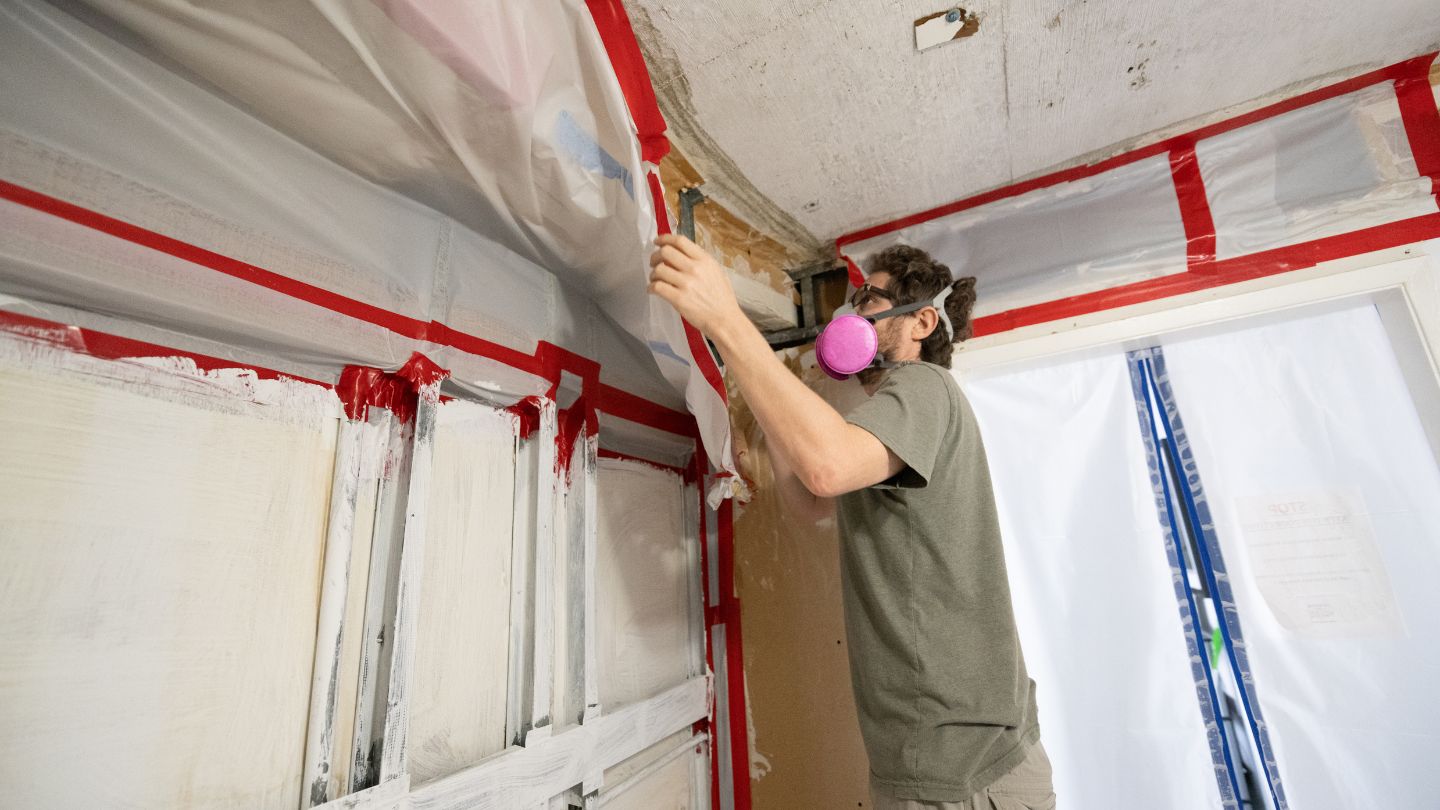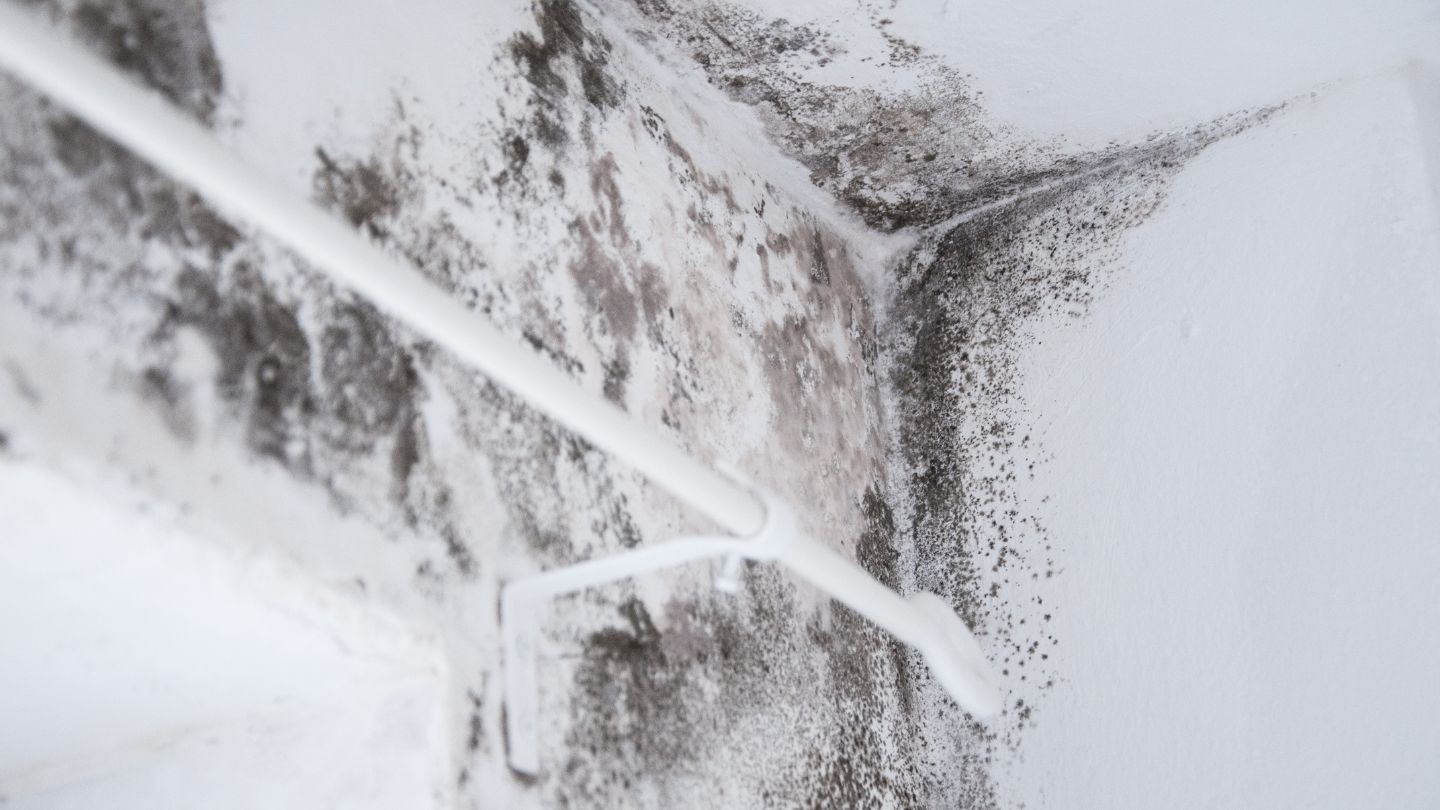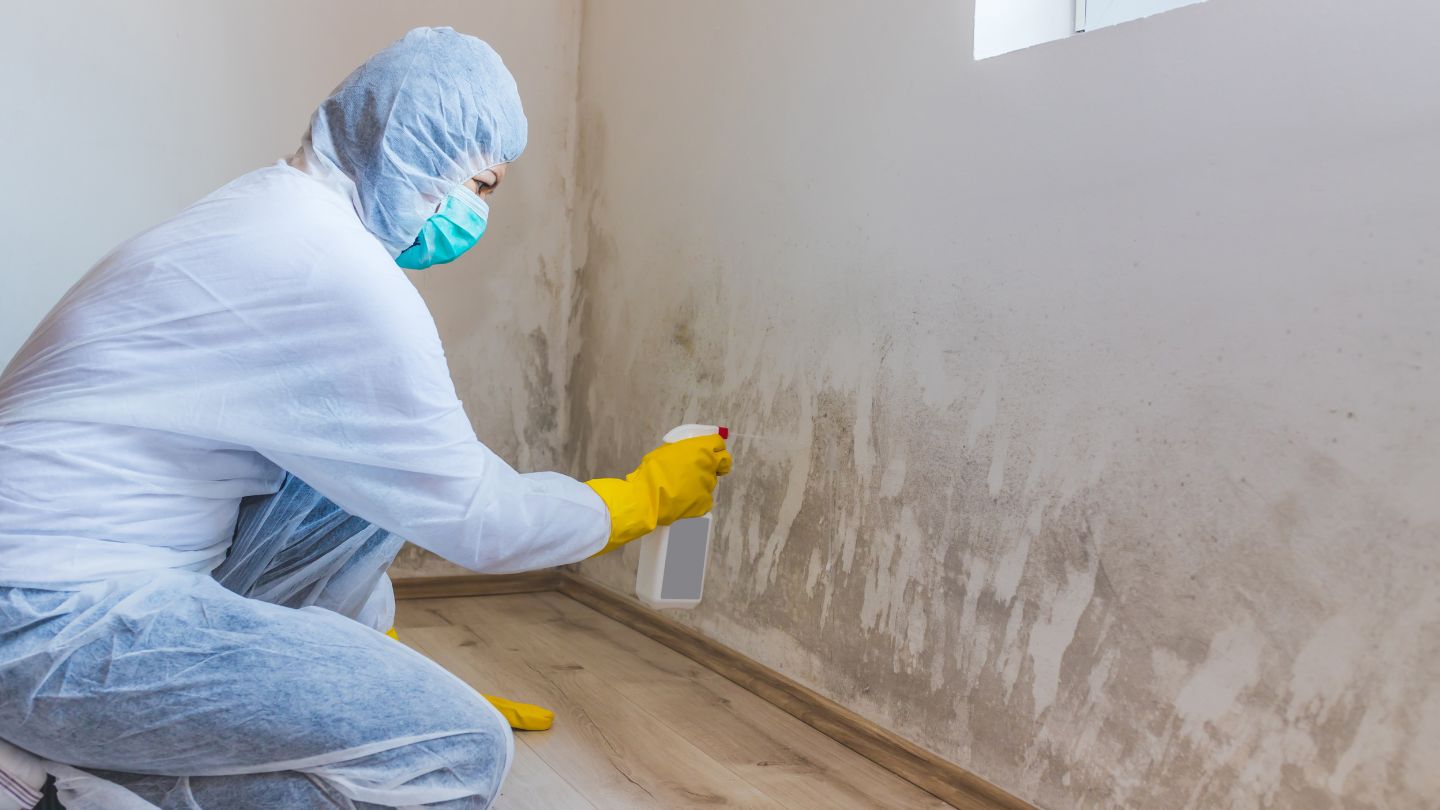Wondering how long does mold remediation take? The process usually spans from a few days to a couple of weeks, influenced by the severity of the mold and environmental factors. This blog will guide you through each step, so you know what to expect.
Key Takeaways
- Mold remediation typically takes between a few days to a couple of weeks, depending on the severity of the infestation and other influencing factors such as accessibility and structural damage.
- The remediation process consists of several critical stages, including inspection, containment setup, mold removal, cleaning, drying, and final inspection, with each stage having specific timeframes.
- Professional mold remediation is essential to effectively manage health risks and ensure thorough removal of mold, using specialized equipment and expertise to prevent future growth.
Understanding the Mold Remediation Timeline
The mold remediation process involves several critical stages, each playing a vital role in effectively eliminating mold and ensuring safety. From the initial mold inspection to the final clearance, understanding this timeline helps set realistic expectations and prepares you for the journey ahead. Typically, the entire process can take anywhere from a few days to a couple of weeks, and long mold remediation takes into account the severity of the infestation and other factors.
Each stage, from setting up containment barriers to thorough cleaning and drying, has a specific role in the remediation plan. Identifying the root cause of mold growth and developing a comprehensive strategy to address it is critical. Your project manager will keep you informed, ensuring the plan is meticulously followed.
Here’s a breakdown of each stage of the mold remediation process, detailing what the steps involved are and the usual duration for each step.
Initial Mold Inspection
The initial mold inspection is the cornerstone of the mold remediation process. This step involves identifying the scope of the mold problem through a thorough mold inspection, which includes a moisture assessment and mold species sampling. Typically, this phase takes 1-2 days to complete. However, accessibility issues, such as mold behind walls or beneath floors, can extend this timeframe.
Uncovering hidden mold sources and evaluating moisture levels are vital for creating an effective remediation plan.
Containment Setup
Setting up containment is a vital phase, usually requiring about one day. During this stage, barriers like plastic sheeting are installed to isolate affected areas and prevent mold spore spread. Protective structures such as ram boards and padding are also utilized during preparation.
Equipment like negative air pressure machines or air scrubbers may also be used to remove excess moisture, enhancing mold spore containment.
Mold Removal Process
The actual mold removal process is where the bulk of the work happens. This stage typically takes 1-5 days, depending on the extent of the infestation and the specific conditions of the affected areas. Mold removal involves physically removing mold from surfaces and may include structural repairs if necessary. After the mold is removed, treatment can take anywhere from a few hours to a few days, depending on the severity and complexity of the situation.
Mold removal includes multiple steps, such as applying antifungal treatments and removing contaminated materials, to thoroughly eliminate mold and prevent future growth. The duration varies based on the severity of the problem and affected surfaces. Structural repairs, such as replacing drywall, can also extend this phase.
When it comes to mold remediation vs mold removal, understanding the distinction is key. Mold removal targets visible mold, offering a short-term solution. On the other hand, mold remediation goes deeper by addressing the root cause, managing moisture, and preventing future mold growth. For long-lasting results, remediation ensures a safer and healthier environment.
Cleaning and Sanitizing
Cleaning and sanitizing are crucial for restoring a mold-free environment, typically taking 1-2 days. During this phase:
- Affected areas are thoroughly cleaned to eliminate any remaining mold spores.
- Non-porous surfaces are sanitized.
- Unsalvageable porous materials are properly disposed of.
Comprehensive cleaning and sanitizing are key to effective mold remediation and ensuring a safe living environment.
Drying and Dehumidifying
Drying and dehumidifying are essential for preventing future mold growth, typically taking 1-3 days. Dehumidifiers and air movers are used to achieve optimal dryness and remove excess moisture.
Properly drying the affected areas is vital for preventing future mold infestations and maintaining a mold-free environment.
Final Inspection and Clearance
The final inspection and clearance typically take 1-2 days, involving a thorough assessment of moisture levels and checking for any remaining mold residues. This ensures the mold remediation process has been successful and no mold remains.
A successful final inspection ensures a safe, mold-free environment for occupants.
Factors Influencing Mold Remediation Duration

Several factors influence the duration of the mold remediation process:
- The severity of the infestation
- Accessibility of affected areas
- Type of mold
- Extent of structural damage
- Identification and repair of moisture sources
Understanding these factors affect helps set realistic expectations and prepares for potential challenges.
Unexpected issues and resource availability can also impact the remediation timeline. Each factor contributes to the overall plan and must be carefully considered to ensure effective remediation and prevent future mold growth.
Severity of Mold Infestation
The severity of the mold infestation is a key factor in determining how long does mold remediation take, as mold remediation depends on the severity of the situation. Severe cases typically require more time to address effectively, especially when considering future infestations.
Thoroughly assessing the extent of mold growth and affected areas is necessary to develop an appropriate mold assessment and remediation plan.
Accessibility of Affected Areas
The accessibility of affected areas significantly influences the remediation duration and the affected materials. Difficult-to-reach affected area, such as behind walls or under floors, can extend the time needed.
Structural damage can impede accessibility, requiring additional repairs before mold removal can be completed.
Type of Mold
Different types of mold require specific removal techniques, affecting overall remediation time. Some species are more challenging to remove, necessitating more complex processes and increasing project duration.
Identifying the type of mold is crucial for developing an effective remediation plan.
Extent of Structural Damage
Structural damage caused by mold growth and mold damage can prolong the remediation process. Repairs, such as replacing damaged drywall or wood, are often necessary after mold removal.
These repairs extend the overall remediation duration and are critical for restoring the integrity of affected areas.
Moisture Source Identification and Repair
Identifying and repairing moisture sources prevents future mold growth. Failure to address these issues can lead to mold recurrence. The initial inspection involves checking hidden areas and air ducts to identify all sources.
Properly addressing moisture issues ensures long-term success in mold remediation.
Why Professional Mold Remediation is Essential

Professional mold remediation is crucial for effectively addressing mold problems and ensuring a mold-free environment. Professionals bring specialized knowledge and tools, equipped to handle larger areas and ensure all necessary steps are taken for success.
The severity of the infestation and strategies employed can affect the duration of mold remediation. Professional services ensure the process is conducted thoroughly and efficiently, preventing future growth and ensuring occupant safety.
Health Risks of Mold Exposure
Mold exposure can lead to various health problems, especially worsening conditions like asthma or allergies. DIY removal can exacerbate the mold issue, revealing hidden mold, inadequate equipment, and can pose health risks.
Professional intervention is essential to manage mold exposure risks and ensure proper removal effectively.
Specialized Equipment and Expertise
Professional mold remediators use:
- Specialized tools and cleaning agents designed for effective mold elimination
- Expertise in thorough removal of mold
- Deodorizing techniques
- Handling of electrical components
Residents can often stay on their property during mold remediation, depending on severity and sensitivity.
Preventing Future Mold Growth
Failing to address underlying moisture issues can cause mold issues to return. Common sources include leaking pipes, water damage, and poor ventilation. Identifying these sources during remediation is essential to prevent future growth.
Improving ventilation and eliminating moisture sources are crucial steps in prevent mold growth.
What to Expect During Mold Remediation
Understanding the mold remediation timeline helps set realistic expectations. The process involves removing, cleaning, and disinfecting contaminated areas.
The final step in mold remediation is Restoration Repair. A post-remediation report includes visual inspection, odor detection, and environmental sampling.
Communication with the Project Manager
Communication with the project manager is vital during remediation. They oversee the process and provide updates on any changes, ensuring the plan is meticulously followed and issues are promptly addressed.
Safety Precautions
Safety is a top priority during mold remediation. Technicians use personal protective equipment (PPE) like gloves, masks, and goggles to minimize exposure. Occupants should ensure ventilation systems are properly sealed to prevent mold spore spread.
It is generally recommended to leave the property during remediation for safety, especially if exposure poses health risks.
Post-Remediation Steps
After remediation, homeowners should:
- Monitor areas prone to mold growth, such as dark cabinets and moist areas.
- Monitor humidity levels.
- Avoid damp areas.
- Ensure proper ventilation.
If mold growth is suspected post-remediation, schedule an inspection. Repairing or replacing mold-damaged materials is essential for restoration.
Wrapping It Up
Understanding the mold remediation process and its timeline is vital for tackling mold problems effectively and ensuring a safe, healthy environment. From inspection to drying and final clearance, each stage has its role in complete mold removal. Factors such as the severity of the infestation, accessibility, and structural damage determine the duration, emphasizing the need for a professional approach.
At 911 Floods R Us, we specialize in providing expert mold remediation in Atlanta. Our team uses advanced techniques and equipment to handle every stage of the process, ensuring thorough removal and prevention of future growth. Trust us to restore your home or business to a mold-free, safe space efficiently. Don’t wait to take action—contact us for reliable solutions today!
Frequently Asked Questions
What is the typical duration for water damage restoration?
Water damage restoration typically takes a few days to a week, depending on the severity of the damage. Prompt action can help expedite the process and minimize further issues.
Is it safe to remain at home during mold remediation?
It is safest to leave the property during mold remediation to avoid potential health risks from mold exposure. Prioritizing your health is crucial in these situations.
What precautions should be taken after flood damage restoration?
After flood damage restoration, it’s crucial to monitor humidity levels, avoid damp areas, and maintain proper ventilation to prevent further issues such as mold growth. Taking these precautions will help ensure a safe and healthy environment.

